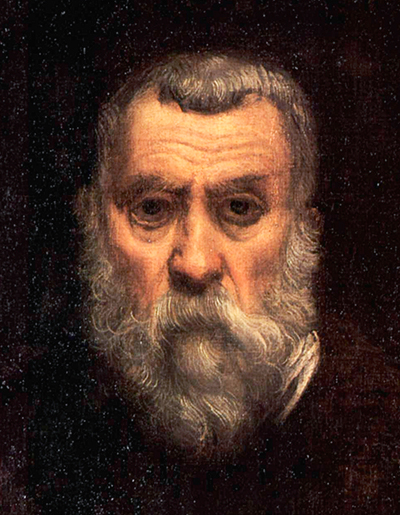 Buy Art Prints Now
Buy Art Prints Nowfrom Amazon
* As an Amazon Associate, and partner with Google Adsense and Ezoic, I earn from qualifying purchases.
Jacopo Tintoretto was a key member of the Venetian school throughout the 16th century, starring alongside other famous artists such as Titian, Giovanni Bellini, Giorgione, Annibale Carracci and Paolo Veronese.
Despite his strong connection to this influential group of artists he was very much his own man, artistically speaking. We was never fully accepted by the other members of this group, mainly because his style was somewhat unique. Even from an early age he had forged his own style that many felt would be hard to shift in favour of the accepted methods of the Venetian school.
He would remain on the fringes of this group as a result but was still able to forge a successful career despite going it alone. He made himself a particularly flexible artist, appealing to new donors by requesting very small sums of payment and also being willing to listen to their requests more respectfully than some others.
Many established artists were particularly unresponsive to suggestions from others, sometimes even rude. He was not in a position to be able to display this kind of behaviour, nor was it particularly part of his character either. An example to contrast against this might by Michelangelo who would sometimes use Sebastiano del Piombo as a means to prevent his own arrogance from upsetting clients. Eventually his personality would prove to much even for Sebastiano, one of his greatest admirers.
Tintoretto was, first and foremost, a Mannerist artist. His work was bold in style and his speed of production was furious. Il Furioso, as he was nicknamed in honour of this, went way beyond the more subtle members of the Early Renaissance, using three dimensional depth to his figures as well as adding great drama to his scenes more generally. It is probable that his work at that time was not as respected as it is today, because of the new direction in which he was heading.
The two artists to have influenced and inspired Tintoretto the most were actually scribed directly above his studio. "...Il disegno di Michelangelo ed il colorito di Tiziano..." made no secret of his love for Michelangelo's drawings and the colour of Titian's paintings.
The artist had been rejected by Titian early in his career and was forced to study by himself in his studio from that point onwards. His passion and strong work ethic meant he was able to overcome this considerable challenge. Tintoretto was an excellent sculptor initially and would study the impact of light and angle on the human body through models of Michelangelo's work. This would also benefit him as a painter in future years.
Tintoretto would not pass on his skills to a large studio of assistants, differing in that regard to most masters of this period. Instead he employed just a few extra hands to help out, most of whom were direct family members (one of his daughters was particularly talented). This meant that his legacy would not continue within Venice but it is generally accepted that El Greco, a truly famous painter, would have incorporated much of Tintoretto's style into his own work. A simple comparison of their two careers bears obvious similarities in style, colour and composition.
A proud Venetian, this artist would involve himself in all forms of the arts across the city. He did keep his working practices secret, though, and was not as socialable when it came to inviting guests to his studio or entertaining friends or family there. He was a truly devoted artist, often in his studio even when not working. He simply loved to be around his paintings, drawings and models and also created and played musical instruments and was a skilled mechanical engineer.
The development of the Renaissance towards Mannerist and Baroque styles can be seen by comparing the work of Tintoretto with those of a more classical approach. Every century there would be new ideas that would take time to settle before being refined further. This individual was an impressive character who achieved so much despite the hurdles placed in front of him and was someone who loved his craft, first and foremost, and was never distracted by the wealth, fame or power that could come from a successful artistic career.




